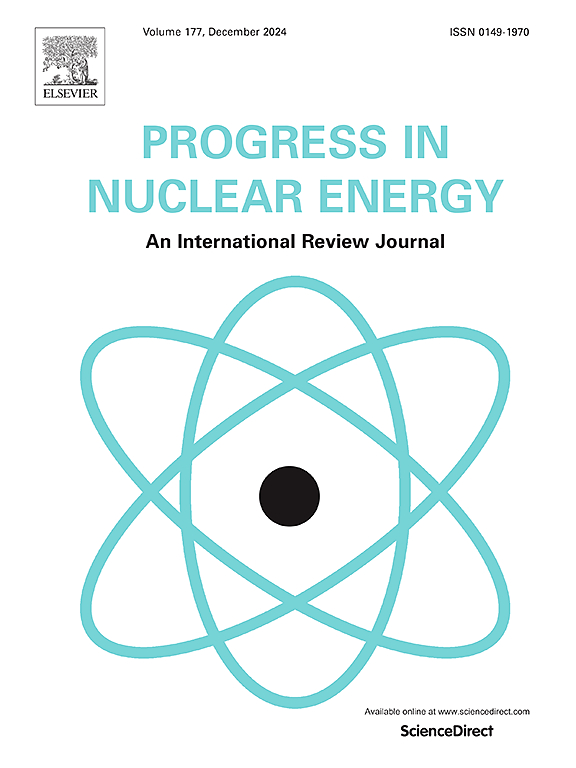Temperature sensitivity of the equilibrium neutronics and accident analysis of the HTR-10
IF 3.3
3区 工程技术
Q1 NUCLEAR SCIENCE & TECHNOLOGY
引用次数: 0
Abstract
Pebble-Bed High-Temperature Gas-cooled Reactors (PB-HTGR) are moderated by the graphite in the fuel pebbles and the graphite reflector surrounding the pebble-bed. Because graphite is by far the most abundant material in PB-HTGRs and the primary moderator, accurate modeling of the graphite material, including density, impurities, and temperatures, is crucial for accurate computational modeling and simulation of these reactors. While main characteristics of the graphite components are often known, the local temperature is less well known and often averaged over all components. This work studies the impact of considering accurate temperature profiles in the graphite material on the generation of a small PB-HTGR model at the state of equilibrium operation and on short-term accident progression. The fuel compositions for the PB-HTGR were determined using a jump-in equilibrium modeling method, the Axial Radial Zone Equilibrium Modeling (AR-ZEM) method. In contrast to previous work, the AR-ZEM method was used considering thermal-hydraulic feedback from the MELCOR code to determine temperatures of the fuel pebbles and the surrounding graphite reflector. The consideration of an axial and radial temperature profile in the core and reflector, as opposed to uniform material temperatures, had an impact of almost 1,300 pcm on the equilibrium core eigenvalue and caused significant differences in the discharged plutonium fuel inventory with up to 4.9% and 11.0% for Pu-239 and Pu-242, respectively. To assess the impact on short-term accident progression, two Anticipated Transient Without SCRAM (ATWS) events, a Pressurized Loss of Forced Coolant (PLOFC) and a Control Rod Withdrawal (CRW) with loss of flow, were simulated with MELCOR. The use of temperature profiles in the equilibrium core models did not reveal a significant impact on the temperature, power, or reactivity responses during the transients. In conclusion, a need for consideration of accurate temperature profiles, in particular for the graphite reflector, was found for the generation of equilibrium PB-HTGRs core models using jump-in methods, but detailed temperature profiles may not be necessary when performing conservative transient analysis.
求助全文
约1分钟内获得全文
求助全文
来源期刊

Progress in Nuclear Energy
工程技术-核科学技术
CiteScore
5.30
自引率
14.80%
发文量
331
审稿时长
3.5 months
期刊介绍:
Progress in Nuclear Energy is an international review journal covering all aspects of nuclear science and engineering. In keeping with the maturity of nuclear power, articles on safety, siting and environmental problems are encouraged, as are those associated with economics and fuel management. However, basic physics and engineering will remain an important aspect of the editorial policy. Articles published are either of a review nature or present new material in more depth. They are aimed at researchers and technically-oriented managers working in the nuclear energy field.
Please note the following:
1) PNE seeks high quality research papers which are medium to long in length. Short research papers should be submitted to the journal Annals in Nuclear Energy.
2) PNE reserves the right to reject papers which are based solely on routine application of computer codes used to produce reactor designs or explain existing reactor phenomena. Such papers, although worthy, are best left as laboratory reports whereas Progress in Nuclear Energy seeks papers of originality, which are archival in nature, in the fields of mathematical and experimental nuclear technology, including fission, fusion (blanket physics, radiation damage), safety, materials aspects, economics, etc.
3) Review papers, which may occasionally be invited, are particularly sought by the journal in these fields.
 求助内容:
求助内容: 应助结果提醒方式:
应助结果提醒方式:


